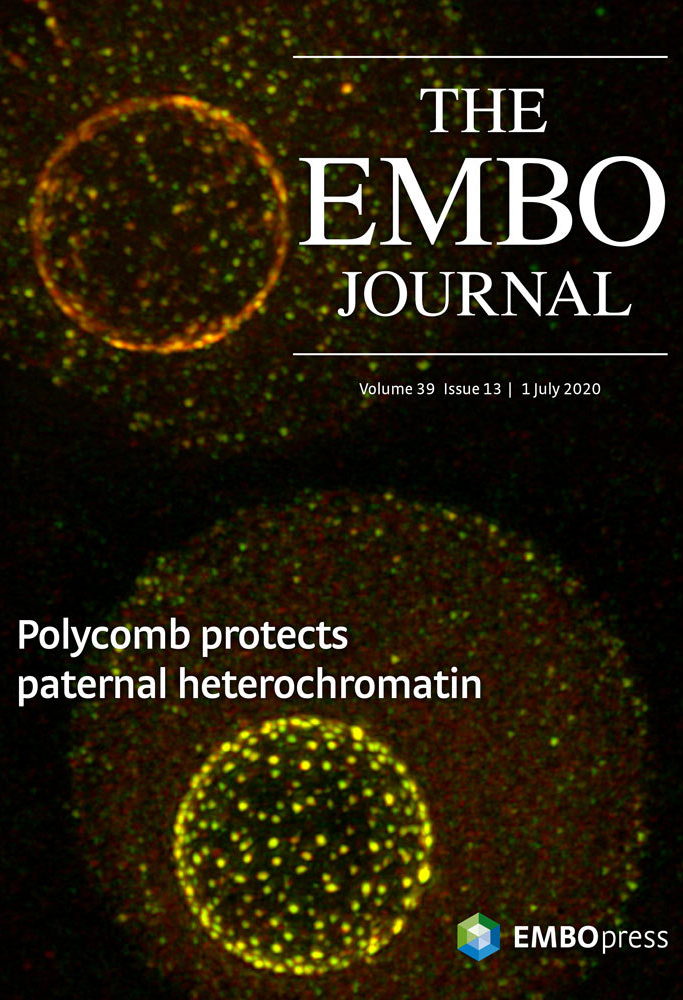EMBO J. 2020 Jun 2;e104163. doi: 10.15252/embj.2019104163. Online ahead of print.
Michele Bertacchi1,2, Anna Lisa Romano1, Agnès Loubat1, Frederic Tran Mau-Them3,4, Marjolaine Willems5, Laurence Faivre3,4,6, Philippe Khau van Kien7, Laurence Perrin8, Françoise Devillard9, Arthur Sorlin3,4,6,10, Paul Kuentz3,11, Christophe Philippe3,4, Aurore Garde4,6, Francesco Neri12,13, Rossella Di Giaimo14,15, Salvatore Oliviero12, Silvia Cappello15, Ludovico D’Incerti16, Carolina Frassoni2, Michèle Studer1
Affiliations
1 Université Côte d’Azur, CNRS, Inserm, iBV, Paris, France.
2 Clinical and Experimental Epileptology Unit, Fondazione IRCCS Istituto Neurologico Carlo Besta, Milano, Italy.
3 UMR1231 GAD, Inserm – Université Bourgogne-Franche Comté, Dijon, France.
4 Unité Fonctionnelle Innovation en Diagnostic Génomique des Maladies Rares, FHU-TRANSLAD, CHU Dijon Bourgogne, Dijon, France.
5 Hôpital Arnaud de Villeneuve, Service de Génétique Médicale, CHU de Montpellier, Montpellier, France.
6 Centre de Référence maladies rares « Anomalies du développement et syndromes malformatifs », Centre de Génétique, FHU-TRANSLAD, CHU Dijon Bourgogne, Dijon, France.
7 Hôpital Carémeau, UF de Génétique Médicale et Cytogénétique, Centre de Compétences Anomalies du Développement et Syndromes Malformatifs, CHU de Nîmes, Nîmes, France.
8 Unité Fonctionnelle de Génétique Clinique, Hôpital Robert Debré, Paris, France.
9 Département de Génétique et Procréation, Hôpital Couple-Enfant, CHU de Grenoble, Grenoble, France.
10 Centre de référence maladies rares « Déficiences intellectuelles de causes rares », Centre de Génétique, FHU-TRANSLAD, CHU Dijon Bourgogne, Dijon, France.
11 Génétique Biologique, PCBio, Centre Hospitalier Universitaire de Besançon, Besançon, France.
12 Epigenetics Unit, Italian Institute for Genomic Medicine, University of Torino, Torino, Italy.
13 Leibniz Institute on Aging, Fritz Lipmann Institute (FLI), Jena, Germany.
14 Department of Biology, University of Naples Federico II, Napoli, Italy.
15 Max Planck Institute of Psychiatry, München, Germany.
16 Neuroradiology Unit, Fondazione IRCCS Istituto Neurologico Carlo Besta, Milano, Italy.
Abstract
The relationships between impaired cortical development and consequent malformations in neurodevelopmental disorders, as well as the genes implicated in these processes, are not fully elucidated to date. In this study, we report six novel cases of patients affected by BBSOAS (Boonstra-Bosch-Schaff optic atrophy syndrome), a newly emerging rare neurodevelopmental disorder, caused by loss-of-function mutations of the transcriptional regulator NR2F1. Young patients with NR2F1 haploinsufficiency display mild to moderate intellectual disability and show reproducible polymicrogyria-like brain malformations in the parietal and occipital cortex. Using a recently established BBSOAS mouse model, we found that Nr2f1 regionally controls long-term self-renewal of neural progenitor cells via modulation of cell cycle genes and key cortical development master genes, such as Pax6. In the human fetal cortex, distinct NR2F1 expression levels encompass gyri and sulci and correlate with local degrees of neurogenic activity. In addition, reduced NR2F1 levels in cerebral organoids affect neurogenesis and PAX6 expression. We propose NR2F1 as an area-specific regulator of mouse and human brain morphology and a novel causative gene of abnormal gyrification.
PMID: 32484994
DOI: 10.15252/embj.2019104163

